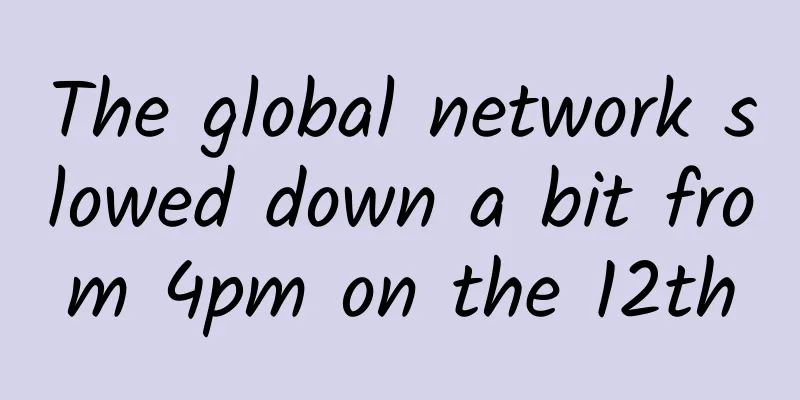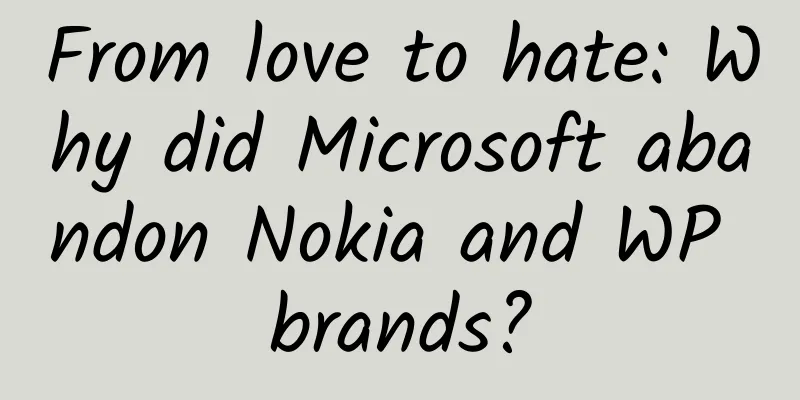The global network slowed down a bit from 4pm on the 12th

|
Starting at 4:00 p.m. Beijing time on August 12, 2014, Internet access around the world suddenly slowed down a little. Unfortunately, it will probably slow down again. And this time, it's not you who is at fault, it's the world. What's wrong? Too many routing rules, overflowing. You may have seen a string of numbers such as 192.168.1.1. Such numbers are called "IP addresses". This is the "real address" of the websites you visit. When you enter www.guokr.com (this is called the "domain name"), the network will convert it into the real address 111.13.57.142, and then find where the website is. If there is a problem with this conversion system (also known as "DNS"), the network will have problems - but not this time, stop. The numbers in common IP addresses are regulated: four numbers, each ranging from 0 to 255, which is called "IPv4" (Internet Protocol version 4). Then there will be a total of 2^32 different addresses, which is nearly 4.3 billion. ...It doesn't seem like there are that many. Not enough for everyone. Moreover, many of these 4.3 billion addresses are reserved. For example, all addresses starting with 9 are owned by IBM, those starting with 12 are owned by AT&T, those starting with 17 are owned by Apple, and those starting with 18 belong to MIT. There is nothing we can do about it, because they got them early. Some kind organizations, such as Stanford, originally occupied all the addresses starting with 36, and are now giving back the extra addresses to society, but not all people are so kind. A census of IPv4 addresses in April 2012 shows usage. Black means no data, and other colors represent usage rates. Due to the survey method, the actual usage rate is definitely higher than it appears in the figure. Image source: Internet Census 2012 So those technicians were short-sighted? This is not true. The IPv4 protocol was born in 1981. As early as the late 1980s, they anticipated this problem of insufficient addresses. However, the new generation of IPv6 protocol, which can provide 3.4×10^38 addresses, was not introduced until 1998. The technical staff finally overcame their procrastination. What's next? Of course, everyone else will start to procrastinate. Sixteen years have passed since IPv6 was introduced, and the number of people using IPv6 on the Internet is about 4%. (This number is based on statistics of people visiting Google. Considering the existence of the magical country of China, the real number is definitely lower.) The ISP Column released a chart showing the percentage of IPv6 users in each country (June 2013). Don't be fooled by the color, France is as green as it is, but it's only 5.46%. Interestingly, Romania has the highest percentage of users, at 10.84%. In order to delay the explosion of IPv4 and avoid the painstaking effort of switching to a new protocol, we are seizing the opportunity to use every bit of remaining IP space fragments. The good days of generously allocating tens of thousands of addresses to an organization are gone, and even a small handful of 256 addresses must be fought for. But this is hard work for routers. Routers rely on something called a "routing table" to quickly find directions. After each organization gets a segment of IP, it will want to add a rule in the routing table to speed up its access. However, each rule takes up the same amount of space, so the more fragmented the addresses on the Internet, the larger the routing table required. The routing table is very important, so the router will set aside a high-speed memory to store it. For example, a certain router can store one million entries, which should be enough! And seeing that IPv6 will surely conquer the market, I will leave half (512k) for v4 and the other half for v6, which is fine anyway! In fact, most router manufacturers take it for granted that 512k is enough, and they leave so much for v4, which is considered an industry standard. Unfortunately, they clearly underestimated (again) the extent of the Internet's fragmentation. Years of growth have pushed the routing table past the 500,000 mark, and on August 12, U.S. communications company Verizon added 15,000 entries to the v4 routing table, bringing the total to about 515,000, exceeding the upper limit (by comparison, v6 only has a pitiful 20,000 entries). This extra information must be stored in slower ordinary memory, resulting in slowdowns and even local network instability. Verizon quickly discovered the problem and cut back the extra entries, but the aftermath lasted at least several hours. This incident is the so-called "512k" event, and it may be the culprit for the slow network you felt that day. But this is not the end of the problem, it is just the beginning. After all, the routing table will grow naturally, and even without these companies messing around, it will exceed this number sooner or later. And these problems all come from the router, which is a real thing, and replacing the router costs money. Of course, we can continue to rob Peter to pay Paul, and do a wide range of firmware upgrades to leave more fast memory for v4; but the cost is imaginable, which is to further reduce the space left for v6. If v4 had been replaced by v6 earlier, there would not be problems with address fragmentation and excessive routing tables now! However, considering that IE6 has survived for 13 years and has not disappeared until now, and even a pure software update with no harm can't be achieved, it seems that we should not have too much hope for mankind. In fact, think about it, people used to think that 640k of memory was enough, two digits were enough to store the year, and 32 bits were enough to store the seconds. Now another taken-for-granted upper limit has been broken and caused trouble. It is simply a matter of course. As a winner of Toutiao's Qingyun Plan and Baijiahao's Bai+ Plan, the 2019 Baidu Digital Author of the Year, the Baijiahao's Most Popular Author in the Technology Field, the 2019 Sogou Technology and Culture Author, and the 2021 Baijiahao Quarterly Influential Creator, he has won many awards, including the 2013 Sohu Best Industry Media Person, the 2015 China New Media Entrepreneurship Competition Beijing Third Place, the 2015 Guangmang Experience Award, the 2015 China New Media Entrepreneurship Competition Finals Third Place, and the 2018 Baidu Dynamic Annual Powerful Celebrity. |
<<: Microsoft's Black Technology: Ordinary Cameras Transformed into 3D Remote Sensing Sensors
>>: CATL and Pengcheng Unlimited reach technology licensing cooperation
Recommend
Microwave oven, steam oven, fryer, which one is the king of cooking?
Seeing people around you becoming chefs by using ...
After the "disruption" wave, traditional TV manufacturers are forced to run fast
In the past two years, as more and more Internet ...
50th Anniversary: Nissan and Italdesign Create the Ultimate GT-R50
To celebrate the 50th anniversary of the GT-R fam...
16 industries, 29 cases, just read this article for information flow advertising!
The final effect of an advertisement is often det...
Short videos + full links, a new way of marketing movies in 2020
2020 was a turbulent year for the film industry. ...
Shenzhen Junior and Intermediate Accounting Examinations Cancelled Due to the Epidemic: Will be Postponed to 2021 to Take the Examination or Apply for a Refund
Shenzhen Junior and Intermediate Accounting Exami...
Droidcon Beijing 2017 Android Technology Conference will be held in November
Following the grand event in 2016, the droidcon B...
What is Wancibaping? Is it reliable to dominate the screen with 10,000 words? How to rank up
Whether Wancibaping is reliable or not does not l...
What happened with the Netherlands destroying millions of flowers? What is the reason?
It is currently the tulip blooming season. Accord...
Wedding photography advertising promotion case!
After the epidemic, the May Day holiday is approa...
Is the weather forecast always a lie? AI makes the weather more predictable
We are probably accustomed to the real-time weath...
Crab season is here! These 4 places are not recommended for eating crabs, but many people don’t know…
There is a poem from ancient times: "The bel...
Changsha tea delivery, tea service vx, tea tasting venue sharing, audition mode
Changsha tea delivery, tea service vx, tea tastin...
The value that big data and artificial intelligence bring to advertisers
1. All these different moments combined can indic...
Are there any restrictions on URLs for Baidu Frame users?
I believe everyone knows that as long as you have...









